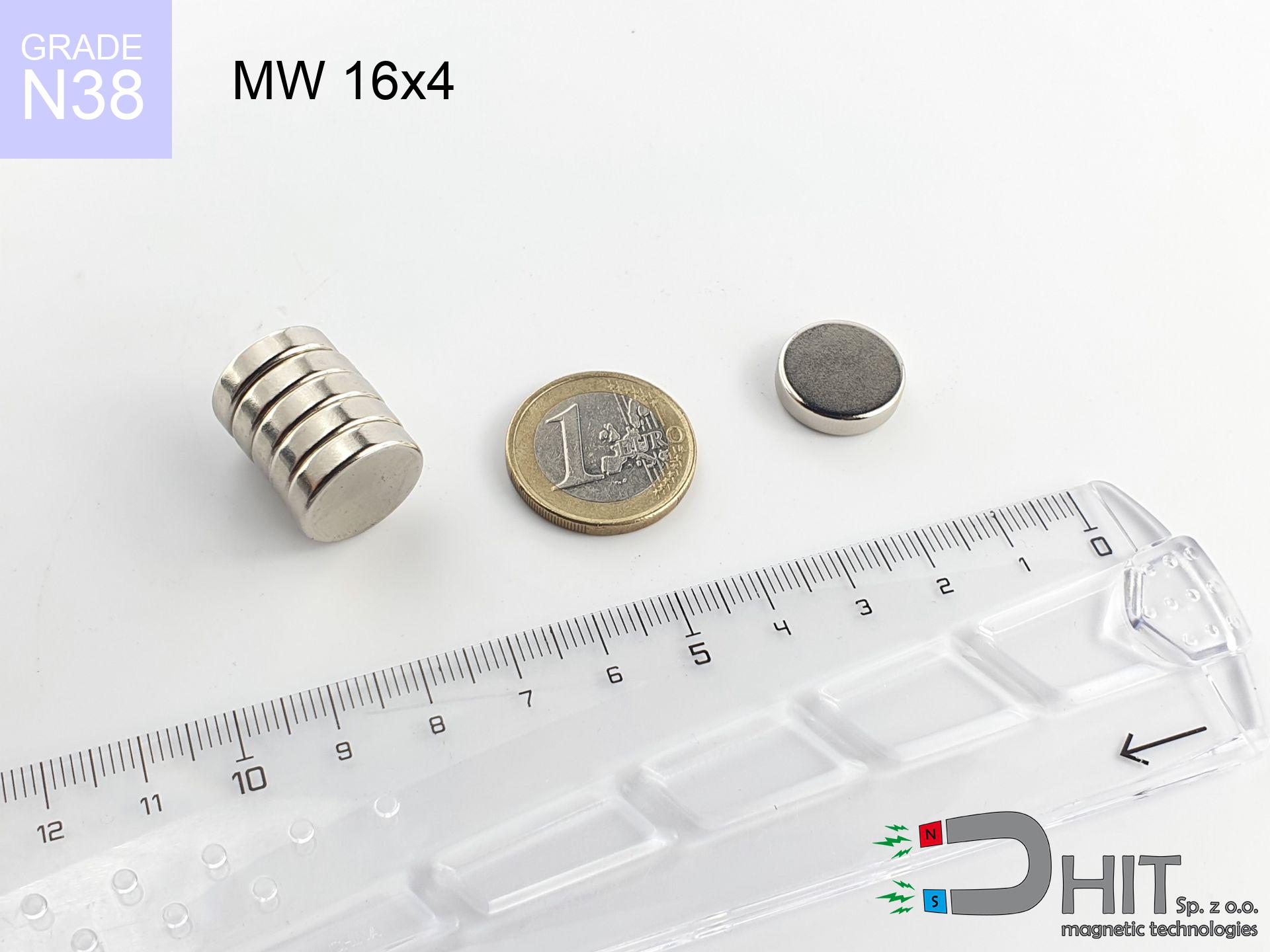SM 25x350 [2xM8] / N42 - magnetic separator
magnetic separator
Catalog no 130350
GTIN/EAN: 5906301812982
Diameter Ø
25 mm [±1 mm]
Height
350 mm [±1 mm]
Weight
0.01 g
Magnetic Flux
~ 6 500 Gauss [±5%]
984.00 ZŁ with VAT / pcs + price for transport
800.00 ZŁ net + 23% VAT / pcs
bulk discounts:
Need more?
Contact us by phone
+48 22 499 98 98
otherwise drop us a message using
inquiry form
the contact page.
Force along with structure of magnets can be verified with our
magnetic calculator.
Orders placed before 14:00 will be shipped the same business day.
Physical properties - SM 25x350 [2xM8] / N42 - magnetic separator
Specification / characteristics - SM 25x350 [2xM8] / N42 - magnetic separator
| properties | values |
|---|---|
| Cat. no. | 130350 |
| GTIN/EAN | 5906301812982 |
| Production/Distribution | Dhit sp. z o.o. |
| Country of origin | Poland / China / Germany |
| Customs code | 85059029 |
| Diameter Ø | 25 mm [±1 mm] |
| Height | 350 mm [±1 mm] |
| Weight | 0.01 g |
| Material Type | Stainless steel AISI 304 / A2 |
| Magnetic Flux | ~ 6 500 Gauss [±5%] |
| Size/Mount Quantity | 2xM8 |
| Polarity | circumferential - 13 poles |
| Casing Tube Thickness | 1 mm |
| Manufacturing Tolerance | ±1 mm |
Magnetic properties of material N42
| properties | values | units |
|---|---|---|
| remenance Br [min. - max.] ? | 12.9-13.2 | kGs |
| remenance Br [min. - max.] ? | 1290-1320 | mT |
| coercivity bHc ? | 10.8-12.0 | kOe |
| coercivity bHc ? | 860-955 | kA/m |
| actual internal force iHc | ≥ 12 | kOe |
| actual internal force iHc | ≥ 955 | kA/m |
| energy density [min. - max.] ? | 40-42 | BH max MGOe |
| energy density [min. - max.] ? | 318-334 | BH max KJ/m |
| max. temperature ? | ≤ 80 | °C |
Physical properties of sintered neodymium magnets Nd2Fe14B at 20°C
| properties | values | units |
|---|---|---|
| Vickers hardness | ≥550 | Hv |
| Density | ≥7.4 | g/cm3 |
| Curie Temperature TC | 312 - 380 | °C |
| Curie Temperature TF | 593 - 716 | °F |
| Specific resistance | 150 | μΩ⋅cm |
| Bending strength | 250 | MPa |
| Compressive strength | 1000~1100 | MPa |
| Thermal expansion parallel (∥) to orientation (M) | (3-4) x 10-6 | °C-1 |
| Thermal expansion perpendicular (⊥) to orientation (M) | -(1-3) x 10-6 | °C-1 |
| Young's modulus | 1.7 x 104 | kg/mm² |
Chemical composition
| iron (Fe) | 64% – 68% |
| neodymium (Nd) | 29% – 32% |
| boron (B) | 1.1% – 1.2% |
| dysprosium (Dy) | 0.5% – 2.0% |
| coating (Ni-Cu-Ni) | < 0.05% |
Environmental data
| recyclability (EoL) | 100% |
| recycled raw materials | ~10% (pre-cons) |
| carbon footprint | low / zredukowany |
| waste code (EWC) | 16 02 16 |
See also offers
Pros and cons of rare earth magnets.
Advantages
- They do not lose power, even during nearly 10 years – the decrease in power is only ~1% (based on measurements),
- Neodymium magnets are extremely resistant to magnetic field loss caused by magnetic disturbances,
- The use of an refined finish of noble metals (nickel, gold, silver) causes the element to have aesthetics,
- The surface of neodymium magnets generates a maximum magnetic field – this is a distinguishing feature,
- Through (adequate) combination of ingredients, they can achieve high thermal resistance, allowing for action at temperatures reaching 230°C and above...
- Possibility of precise forming as well as adapting to precise applications,
- Versatile presence in modern technologies – they are utilized in HDD drives, electric motors, advanced medical instruments, and technologically advanced constructions.
- Compactness – despite small sizes they generate large force, making them ideal for precision applications
Disadvantages
- To avoid cracks under impact, we recommend using special steel housings. Such a solution secures the magnet and simultaneously improves its durability.
- When exposed to high temperature, neodymium magnets suffer a drop in force. Often, when the temperature exceeds 80°C, their power decreases (depending on the size and shape of the magnet). For those who need magnets for extreme conditions, we offer [AH] versions withstanding up to 230°C
- Due to the susceptibility of magnets to corrosion in a humid environment, we advise using waterproof magnets made of rubber, plastic or other material immune to moisture, in case of application outdoors
- Due to limitations in producing nuts and complicated shapes in magnets, we propose using casing - magnetic holder.
- Possible danger to health – tiny shards of magnets are risky, when accidentally swallowed, which becomes key in the context of child health protection. Furthermore, tiny parts of these devices can be problematic in diagnostics medical after entering the body.
- Higher cost of purchase is a significant factor to consider compared to ceramic magnets, especially in budget applications
Holding force characteristics
Maximum lifting force for a neodymium magnet – what affects it?
- with the use of a sheet made of special test steel, ensuring maximum field concentration
- possessing a thickness of at least 10 mm to ensure full flux closure
- with a surface cleaned and smooth
- with direct contact (without paint)
- under perpendicular force direction (90-degree angle)
- in stable room temperature
Practical lifting capacity: influencing factors
- Space between magnet and steel – every millimeter of separation (caused e.g. by veneer or dirt) diminishes the pulling force, often by half at just 0.5 mm.
- Pull-off angle – note that the magnet holds strongest perpendicularly. Under shear forces, the holding force drops drastically, often to levels of 20-30% of the nominal value.
- Steel thickness – too thin plate does not close the flux, causing part of the power to be escaped into the air.
- Material type – the best choice is high-permeability steel. Cast iron may attract less.
- Surface structure – the more even the surface, the better the adhesion and higher the lifting capacity. Roughness creates an air distance.
- Thermal environment – heating the magnet causes a temporary drop of induction. It is worth remembering the maximum operating temperature for a given model.
Lifting capacity testing was carried out on plates with a smooth surface of suitable thickness, under perpendicular forces, whereas under attempts to slide the magnet the lifting capacity is smaller. In addition, even a small distance between the magnet and the plate decreases the holding force.
Safety rules for work with neodymium magnets
Dust explosion hazard
Dust generated during grinding of magnets is combustible. Do not drill into magnets without proper cooling and knowledge.
Protect data
Intense magnetic fields can destroy records on payment cards, HDDs, and other magnetic media. Stay away of min. 10 cm.
Skin irritation risks
Some people suffer from a hypersensitivity to nickel, which is the standard coating for neodymium magnets. Extended handling may cause an allergic reaction. We strongly advise use protective gloves.
Operating temperature
Regular neodymium magnets (grade N) lose power when the temperature exceeds 80°C. Damage is permanent.
Warning for heart patients
Health Alert: Neodymium magnets can turn off heart devices and defibrillators. Do not approach if you have medical devices.
Protective goggles
Protect your eyes. Magnets can explode upon violent connection, ejecting shards into the air. Wear goggles.
Phone sensors
GPS units and mobile phones are highly susceptible to magnetic fields. Close proximity with a strong magnet can ruin the sensors in your phone.
No play value
Only for adults. Tiny parts can be swallowed, leading to serious injuries. Store out of reach of kids and pets.
Safe operation
Before use, read the rules. Uncontrolled attraction can break the magnet or hurt your hand. Think ahead.
Physical harm
Big blocks can break fingers instantly. Do not put your hand betwixt two attracting surfaces.

![Separation magnetic rod SM 25x350 [2xM8] / N42 Separation magnetic rod SM 25x350 [2xM8] / N42](https://cdn3.dhit.pl/graphics/banners/magnet.webp)
![SM 25x350 [2xM8] / N42 - magnetic separator](https://cdn3.dhit.pl/graphics/products/sm-25x350-2xm8-pim.jpg)
![SM 18x275 [2xM5] / N42 - magnetic separator SM 18x275 [2xM5] / N42 - magnetic separator](https://cdn3.dhit.pl/graphics/products/sm-18x275-2xm5-zep.jpg)




